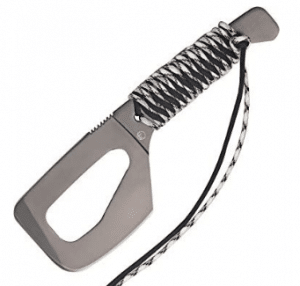Preppers, have you already got a dependable survival hatchet? What is better — a stainless steel blade or carbon steel? How can a sheath design be useful? What handle construction brings benefits? What are the ideal weight and perfect price? And what’s the difference between the survival ax and the hatchet? Follow the article to understand the best gear solutions you will need hiking in the wilderness.
Many preppers usually name such survival tools as a survival knife, rope, first aid emergency kit that would fit into your bug-out bag when talking about survival. Rarely do they mention, though, such items as survival hatchet and ax? Does it mean that you should not own one? Here, in this article, we will answer this question and tackle upon good and bad qualities of a survival hatchet, its optimal design, uses, and pros and cons of carrying one.
Is it a survival hatchet?
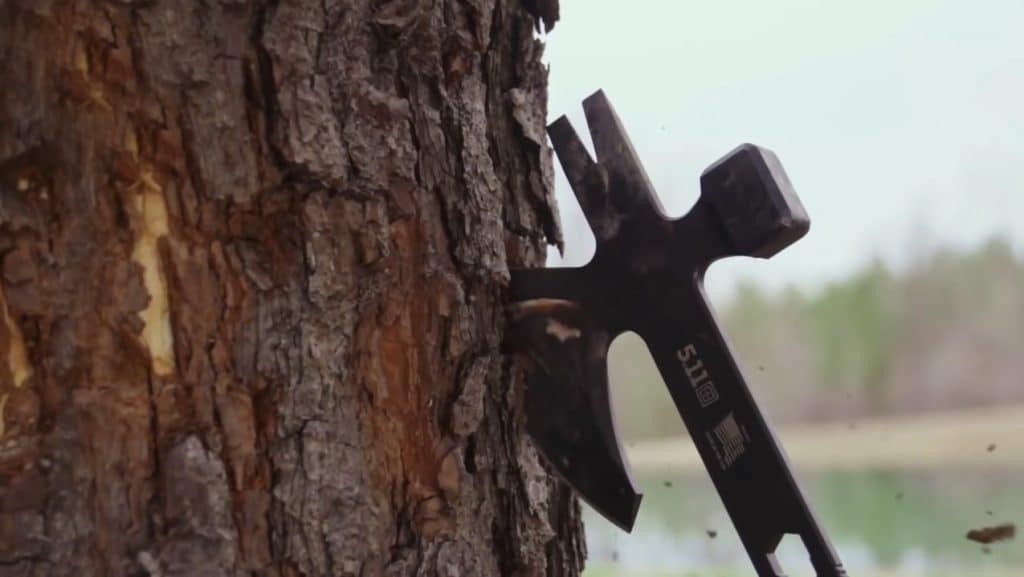
Frankly speaking, the standards for hatchet sizes and weight are quite vague. But if we have a range of several axes lying in a line, then the smallest, shortest (10-16 inches long), and lightest (1-3 lbs) one, will be considered a hatchet.
New Hatchet Designs

This carbon steel hatchet with quite a peculiar design might not be for everyone, but I chose it as a representative of new ideas in design for hatchets and axes. This hatchet model is an example of a survival tool that is useful and looks somewhat futuristic.
Pros and Cons of Carrying a Survival Hatchet
For sure, as with many other survival tools, there comes a question on how reasonable it is to carry one on you. In this section, I am going to tackle this issue.
Hatchet Building Blocks
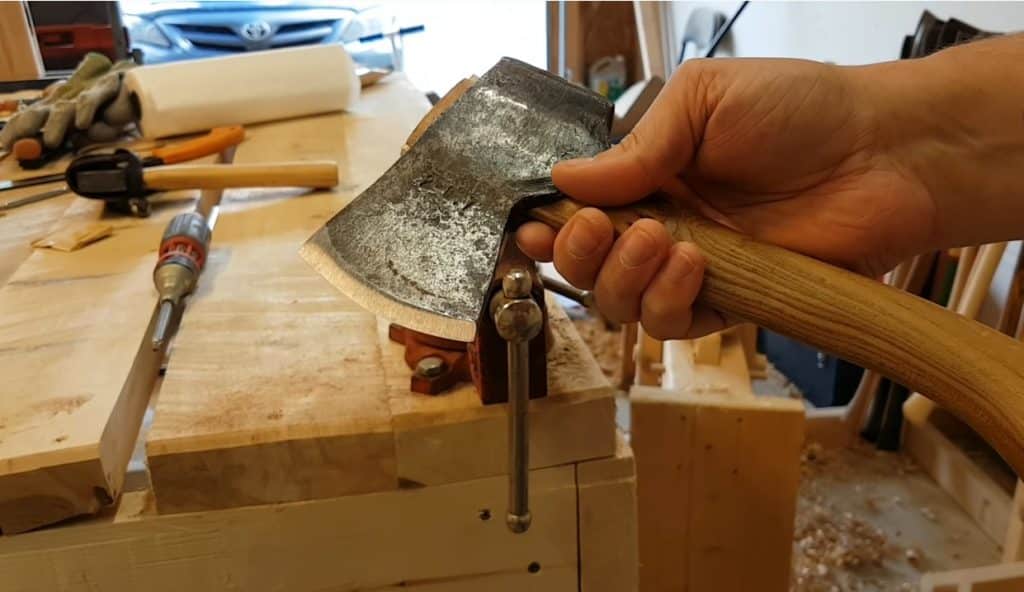
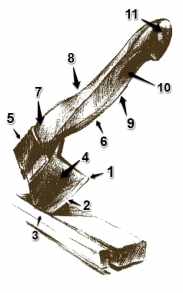
If you think that a hatchet consists only of the blade and the handle, you will be quite surprised to find other parts. Though, for sure, they are less essential than the blade and the handle.
So, here is a hatchet “blueprint”:
- Heel of Bit
- Bit/Blade
- Toe Of Bit
- Ax-side/Cheek
- Poll/Butt
- Belly
- Shoulder
- Back
- Throat
- Grip
- End Knob
Head of Gear
The hand ax head is the main working element of any hatchet, so make sure it is of high quality, so it functions well.
There are two key parameters that determine how well the hatchet cuts: the head sharpness and thickness.
The blade sharpness does not play a big role when it comes to chopping, only its width. So, the blade closer to the handle should not be too wide, so it will get deep and smoothly into the tree. Otherwise, it will just swing off a tree and not bit into it even if you have a very sharp blade. I recommend going for a full-tang blade.
And do not forget about such things as cutting edge that reduces the smoothness and makes the hatchet less effective at penetrating the tree.
The other key parameter that should not be overlooked is the material used for the head of your survival ax or hatchet. I recommend looking for a stainless steel head, high carbon steel head, or forged steelhead that will make one of the best survival hatchets together with a nice wooden or nylon handle.
There must also be a sheath for the blade so that there are no accidents when you carry the hatchet. You can choose a leather sheath, a nylon sheath, better if it is a heavy-duty sheath, for your high-quality stainless steel or high carbon steel blade.
Hatchet Handle Specs
When we talk about any survival hatchet’s handle, we must consider such things as the material the handle is made of and its length.
You may think that the longer the handle is, the better. However, the major drawback here is that it does not fit in the bug-out bag, or you have to have a bigger bag which might not be that convenient in case of an emergency.
What about materials the handle is made of? Then there are only three basic options: wood, metal, and fiberglass.
Though providing quite a good grip when dry, Wood-handled survival hatchets tend to get slick under the exposure of liquids, such as oil or lubricants. Not the best situation when you are swinging the hatchet, right?
Metal handles are good if you are powerful since it is literally quite a heavy-duty. But they are the most durable handles.
But my preference is given to hollowed-out fiberglass handles since this material does not weigh much but has all the positive sides of wooden and metal handles. It is durable, strong, and thanks to a rubber grip, it will not fly away from your hand while chopping.
This is the hatchet I usually carry in my bug-out bag, but you have to choose for yourself. From my perspective, the handle with a rubber grip is a perfect handle for hiking, backpacking, or bugging out.
Weight and Balance
As with any long blades, such as a sword or survival knife, it is important to have your hatchet balanced. The balance point should not be too high or too low. At best, it has to be on the handle right near the head.
Balance plays a vital role when it comes to swinging and carving.
The 3 Survival Hatchet Techniques

- chopping
- splitting
- carving
And probably will add one that any cool guy has to know how to do. And that is swinging a survival hatchet that any video player does in games.
Chopping Tool
If you need to cut a small tree on the spot, then a hatchet is the ax for such a deal. Gerber Bear Grylls and I advise you to aim for the trees with slim trunks. Otherwise, you will be chopping for ages.
If you need some advice on correct chopping techniques, I recommend watching this video since this information will not be covered in the article. The only rule of thumb that has to be mentioned for chopping is that the top and bottom attack angles should be the tree trunk diameter’s size.
Splitting Tool
Splitting wood becomes way easier when you know how to do that properly with a hatchet rather than an ax. Two vital recommendations for the proper splitting technique are doing in from your knees and on the wooden support. The first recommendation comes from differences in length between standard axes and hatchets. The shorter the hatchet, the more chances you will split your leg if you do the splitting while standing up. The second recommendation is the precaution for dinging the blade, and it allows you to sharpen it less often.
Carving TOol
If you need to do a rough wood carving, then a survival hatchet is a good choice instead of a detailed carving when a survival knife is a better option.
Put your hand to the head of your hatchet so that the handle bumps into your arm. Now you are ready to slide the hatchet down a piece of wood. Such a gripping technique allows you to control the angles.
Hatchet Maintenance

For axes, here is an elegant and meticulous guide.
Survival hatchet: uses
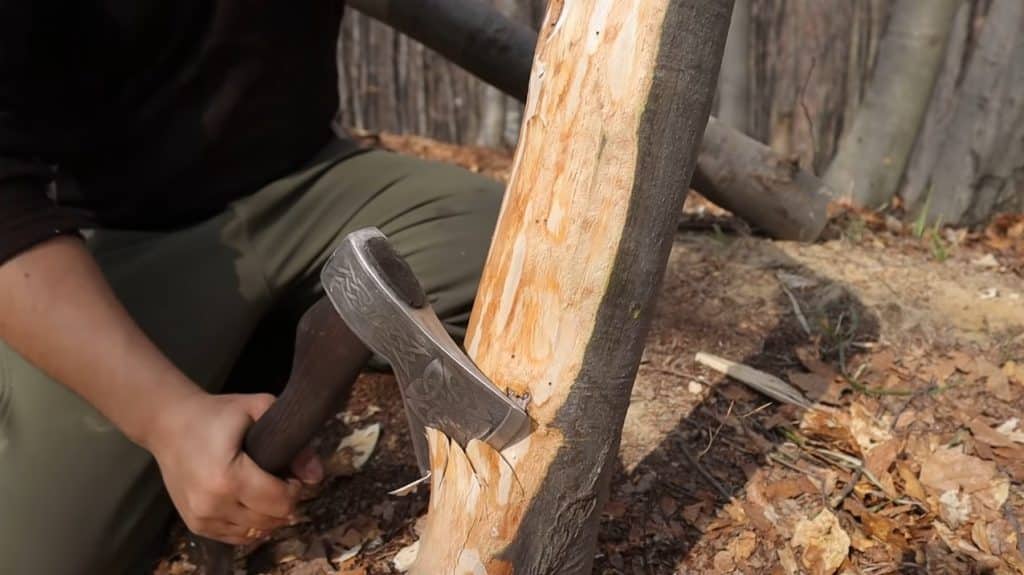
1. Starting a fire
It is way easier to chop and split wood with a hatchet than with a knife for kindling. Moreover, you can use the blade for getting sparks that go on fine tinder. What could be easier? A hatchet is a fire-starter kit! Well, in reality, it is not that smooth, but with the guide from IA Woodsman, you will get everything from your hatchet.
2. Making Feather Sticks
Learning how to make feather sticks is the skill that everyone needs in a wet climate zone. The reason is simple – it is torture to light wet pieces of wood. With dry feather sticks acting as the fine kindling, starting a fire is an easy task.
3. Building a shelter
You can build a survival shelter without a hatchet, but it will be significantly faster with one. You will not have to search for a specific size of your shelter support branches or cut them down to size with a survival knife.
4. Self-defense
Throwing a hatchet is the same trick as throwing a survival knife and can help you in a battle with an opponent, but only if you know how to do so properly. Remember that practice makes perfect.
5. Making splints
Cutting a few pieces of wood for an improvised splint is merely faster with a hatchet.
6. Chop foods
To cut foods carefully, hold just the head of the hatchet blade. The sharper the blade, the better the chopping of your foods, no matter how soft or hard they are.
7. Making spears
Making spears is fairly easy with a hatchet. Just take a solid limb and chop at a certain angle with a hatchet.
8. Hammer stakes
The hatchet’s backside is wide enough for hammering, and also, it will not accidentally chop your shelter or trap stakes. You can also install your tent stakes when your hatchet is used as a hammer.
Survival Hatchet: Should You Be Carrying One?
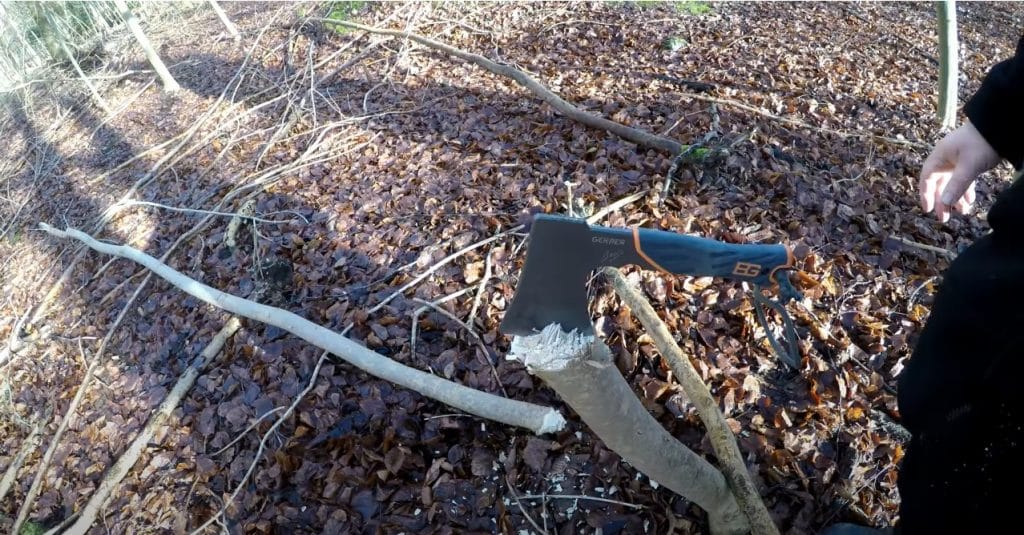
Well, I must say that having a survival hatchet or a small survival ax on you expands your options and opportunities in comparison to a situation when you have merely a survival knife. A hatchet weighs way less than an ax and could be used as a hammer. Nevertheless, the hatchet’s weight is a problem if you are about to be on your feet for long, like hiking, backpacking, or bugging out. The average weight of hatchets or hand axes is around 3lbs, which is not a lot. But if you start counting all the survival tools you have in your bug-out bag, you may start reconsidering taking the hatchet outdoors.
But look at all the pros that survival hatchets have, and weight stops to be such a big problem. Imagine how much time you will be saving up by chopping wood and not trying to find the right branch to cut with your survival knife. In my humble opinion, it does not matter that you have to add up 3 extra lbs to your bug-out bag; what is important is that you save your time and energy when you swing your survival hatchet with a carbon steel blade and the firewood for a day is ready to go. That is why I highly recommend having a survival hatchet on you outdoors.
A survival ax or a survival knife?
Here’s a tough question. As I have stated above, there are things that even a good survival knife will not be efficient enough. Oftentimes, especially when it comes to survival, we need to save up time and energy. And Rocky Mountain Bushcraft also mentions it in their article.
If the place in your bug-out bag allows you to pack a hatchet with a versatile design and a sharp stainless steel blade that comes in a nylon sheath, I would recommend you to add it to your list of survival tools.
And it is always better to carry both a reliable survival knife and a survival ax.
My Absolute Favorite Hatchet
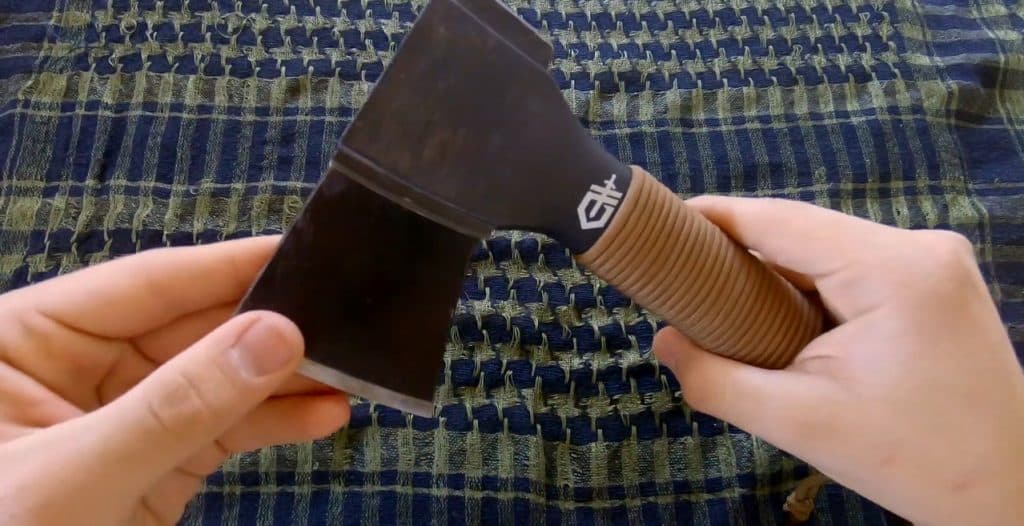
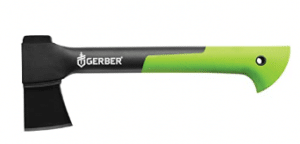
Here, I present you the Gerber 14 inches long Hatchet. The survival hatchet weighs just 1.4 lbs which are good for balancing weight and the number of tools you carry.
This high-quality hatchet has a full-tang construction allowing the best gripping to do chores. The stainless steel blade does not require often sharpening, and the nylon sheath fits perfectly. If you are not a fan of wood-handled hand axes, then this hatchet with a rubberized handle that comes with a lifetime warranty is best for you. Moreover, the belt loop is an amazing tool if you need to free your hands.
Frequently Asked Questions – FAQ
Should you carry a survival hatchet?
My answer is yes, and you should carry one if the place in your bug-out bag allows you to do so. This survival tool has many advantages that will save you time and energy outdoors.
How much does a hatchet cost?
The price tag for a survival hatchet varies from 9 to 200 dollars. Remember that most of them come with a lifetime warranty and serve you for ages.
What ax size is good for camping?
Choose a model of a hand ax about 18 inches long with a weight of around 1.8lbs. These key parameters allow you good swinging techniques for splitting wood so that you do not get tired too fast.
How to make a survival ax?
You will need a piece of wood for the handle and a blade for the head for a survival ax. If you choose carbon steel for your blade, the only problem you might face is rust. So I would opt for stainless steel. Attach the handle and the head together with a piece of rope or carve a special hold in the handle.
How to make a hatchet in the wild?
Since any hatchet consists of two vital parts – the head and the handle – you will need to find something that would fulfill these functions. Any strong brunch can serve as the handle, while for the head, you had better search for a stone that you can sharpen to a sharp blade with the weight of around 0.5-1 lbs. A piece of rope will come in handy to attach these two details to one another.

